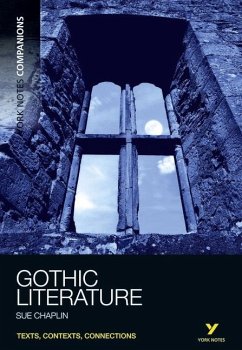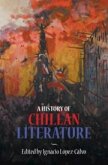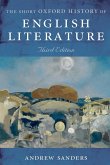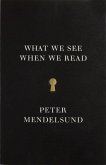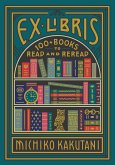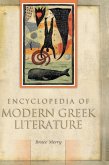An exploration of Gothic literature from its origins in Horace Walpoles 1764 classic The Castle of Otranto, through Romantic and Victorian Gothic to modernist and postmodernist takes on the form. The volume surveys key debates such as Female Gothic, the Gothic narrator and nation and empire, and focuses on a wide range of texts including The Mysteries of Udolpho, Frankenstein,Jane Eyre, Dracula,The Magic Toyshop and The Shining.
Product Description
An exploration of Gothic literature from its origins in Horace Walpoles 1764 classic The Castle of Otranto, through Romantic and Victorian Gothic to modernist and postmodernist takes on the form. Backcover
The York Notes Companion to Gothic Literature explores the genre from its origins in Horace Walpoles The Castle of Otranto, through Romantic and Victorian Gothic to modernist and postmodernist re-imaginings of the form, analysing key debates such as Female Gothic and the Gothic narrator. Examining classic works, including The Mysteries of Udolpho and Frankenstein, alongside literature much newer to the canon, the Companion offers close analysis of texts, and guides students through key literary theories and debates. Connecting texts with their historical and scholarly contexts, this is essential reading for any student of Gothic literature.
Each York Notes Companion provides:
Ø Analysis of key texts and debates
Ø Extended commentaries for further in-depth analysis of individual texts
Ø Exploration of historical, social and cultural contexts
Ø Annotations clarifying literary terms and events in history
Ø Modern theoretical perspectives in practice
Ø Timelines and annotated further reading
Sue Chaplin is a Senior Lecturer in English, and Course Leader for the BA in English and History at Leeds Metropolitan University.
Part One: Introduction
Part Two: A Cultural Overview
Part Three: Texts, Writers and Contexts
Eighteenth-century Gothic: Walpole, Radcliffe and Lewis
Romantic-era Gothic: Coleridge, Byron and Mary Shelley
Nineteenth-century Gothic: Emily Bronte, Poe, Collins and Stevenson
From the Fin de Siecle to Modern Gothic: Stoker, Wells, M.R. James and Lovecraft
Twentieth-century American Gothic: Faulkner, King, Rice and Brite
British Gothic in the Late Twentieth Century: Carter, Ballard, Mantel and Waters
Part Four: Critical Theories and Debates
Narrative Instability and the Gothic Narrator
Female Gothic
Gothic Bodies
Nation and Empire
Part Five: References and Resources
Timeline
Further Reading
Index
Product Description
An exploration of Gothic literature from its origins in Horace Walpoles 1764 classic The Castle of Otranto, through Romantic and Victorian Gothic to modernist and postmodernist takes on the form. Backcover
The York Notes Companion to Gothic Literature explores the genre from its origins in Horace Walpoles The Castle of Otranto, through Romantic and Victorian Gothic to modernist and postmodernist re-imaginings of the form, analysing key debates such as Female Gothic and the Gothic narrator. Examining classic works, including The Mysteries of Udolpho and Frankenstein, alongside literature much newer to the canon, the Companion offers close analysis of texts, and guides students through key literary theories and debates. Connecting texts with their historical and scholarly contexts, this is essential reading for any student of Gothic literature.
Each York Notes Companion provides:
Ø Analysis of key texts and debates
Ø Extended commentaries for further in-depth analysis of individual texts
Ø Exploration of historical, social and cultural contexts
Ø Annotations clarifying literary terms and events in history
Ø Modern theoretical perspectives in practice
Ø Timelines and annotated further reading
Sue Chaplin is a Senior Lecturer in English, and Course Leader for the BA in English and History at Leeds Metropolitan University.
Part One: Introduction
Part Two: A Cultural Overview
Part Three: Texts, Writers and Contexts
Eighteenth-century Gothic: Walpole, Radcliffe and Lewis
Romantic-era Gothic: Coleridge, Byron and Mary Shelley
Nineteenth-century Gothic: Emily Bronte, Poe, Collins and Stevenson
From the Fin de Siecle to Modern Gothic: Stoker, Wells, M.R. James and Lovecraft
Twentieth-century American Gothic: Faulkner, King, Rice and Brite
British Gothic in the Late Twentieth Century: Carter, Ballard, Mantel and Waters
Part Four: Critical Theories and Debates
Narrative Instability and the Gothic Narrator
Female Gothic
Gothic Bodies
Nation and Empire
Part Five: References and Resources
Timeline
Further Reading
Index

